170: Difference between revisions
Pbcjohnston (talk | contribs) Finished adding photos |
Pbcjohnston (talk | contribs) Added one more photo |
||
| Line 67: | Line 67: | ||
<small>U.S. Navy photo</small> | <small>U.S. Navy photo</small> | ||
[[File:Red bar sub new.jpg]] | |||
[[File:Cachalot Cuttlefish Shark.JPG|left|500px]] | |||
<div style="text-align: justify;"><span style="color:#00008B">C1 Cachalot (SS-170), C2 [[171|'''Cuttlefish (SS-171)''']], and P3 [[174|'''Shark (SS-174)''']] moored in a nest in San Diego, 1937. This is a screenshot from the Warner Bros. film ''Submarine D-1''. This scene had the Pacific Fleet submarine force gathering in San Diego for a major exercise. Prominent on the front of the conning tower fairwaters are the boat's bell and horns for the air whistle. | |||
<small>Photo courtesy of Cosmopolitan Productions and Warner Bros.</small> | |||
[[File:Red bar sub new.jpg]] | [[File:Red bar sub new.jpg]] | ||
Revision as of 22:11, 21 June 2023
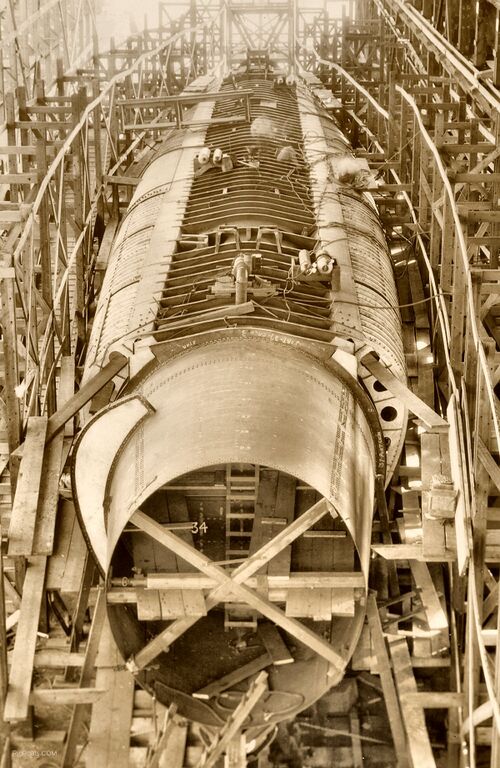
Photo from the Rick Larson Collection
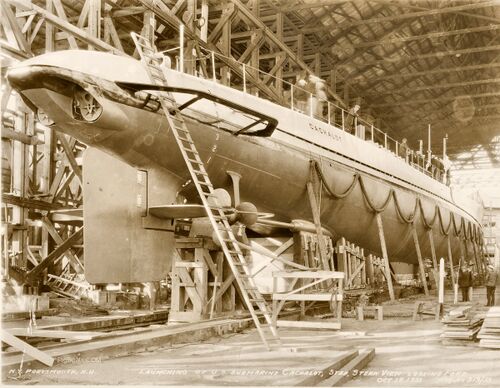
Some crew are standing on deck perhaps in making preparation for launching the next day. Just on the forward edge of the rudder two plates can be seen bolted to the rudder itself. These are made of Zinc and are sacrificial in nature being the least 'noble' of the metals and will corrode away before the harder and more important metals of the hull. There is also one near where the propeller shaft exits the shaft tube.
Photo from the Rick Larson Collection
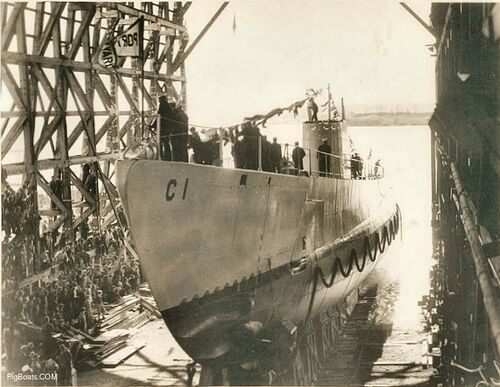
The chains draped on the side of the hull were used to slow the boat as it slid down the ways on the launch cradle. They prevented the boat from sliding too far out into the Piscataqua River. The Portsmouth Navy Yard pennant is flying from the jackstaff.
Photo courtesy of Senior Chief Don

In the background, to the left of the conning tower, Star Island can be seen with the Oceanic Hotel. At the far left at the top edge of the photo Lunging Island can just be made out. This places the Cachalot on an easterly heading just off the north shore of White Island. To the right the horizon has been painted out by the newspaper artists. There a number of small "tweaks" made by the newspaper artists to enable the photo to print with better definition.
News photo in the private collection of Ric Hedman
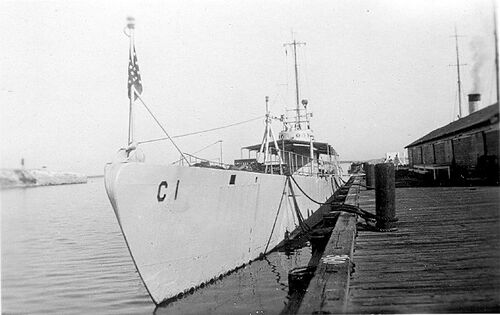
Original photo in the private collection of Ric Hedman
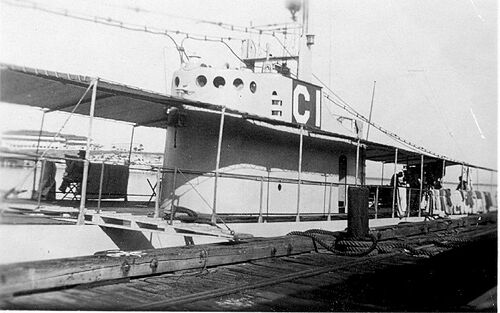
Original photo in the private collection of Ric Hedman
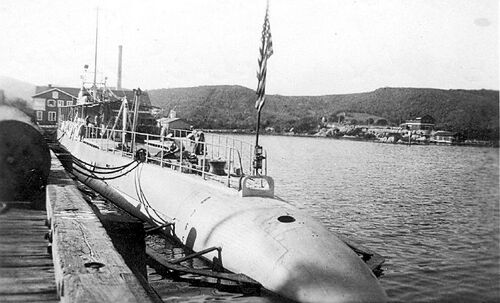
Original photo in the private collection of Ric Hedman
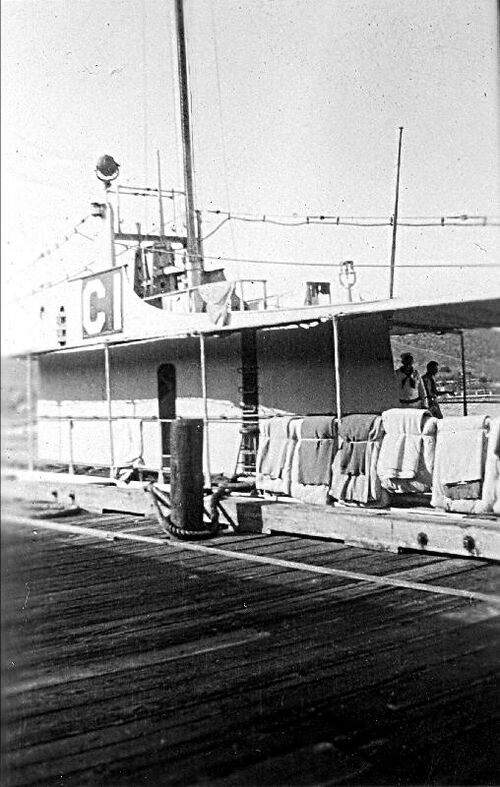
Original photo in the private collection of Ric Hedman
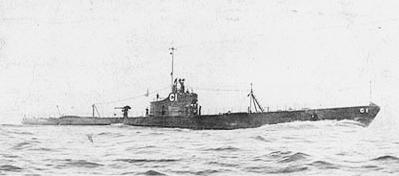
U.S. Navy photo
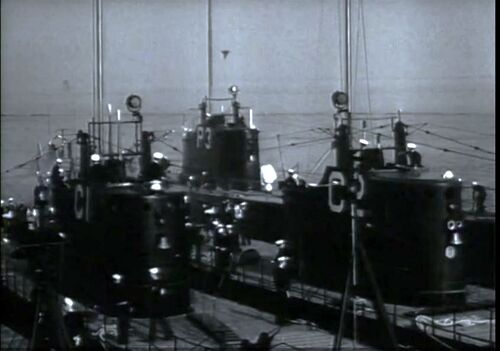
Photo courtesy of Cosmopolitan Productions and Warner Bros.
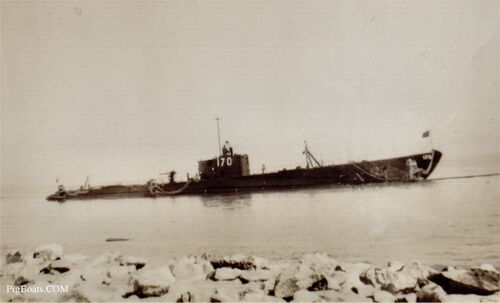
The 3"/50 cal Mk 17 deck gun is very prominent in this photo. The mount that the gun is on allowed it to be elevated to as high as 85 degrees to give it a nominal anti-aircraft capability. However, in practice it made a poor anti-aircraft gun. Not only did the doctrine of the day not support it, but this manually trained and sighted gun was difficult to move and point quickly enough for anti-aircraft use. Also, the boats were rarely supplied with the proper ammo so training really lacked. The ammo they did get lacked the necessary punch to finish off surface targets quickly enough. In short, the gun looked impressive but was essentially useless.
The mod to the cigarette deck was probably done in 1937 during her extensive overhaul at the New York Navy Yard. She returned to the Pacific in June 1939 the same year this photo was developed at The Owl Drug Company, probably at their San Diego or San Francisco store, on November 2, 1939. Other than three early war patrols Cachalot spent the majority of the war as a training submarine at the New London Submarine Base. Her deck gun, though moved from aft of the con to the forward position, was never replaced with a heavier gun.
Original photo in the private collection of Ric Hedman
Page created by:
Ric Hedman & David Johnston
1999 - 2023 - PigBoats.COM©
Mountlake Terrace, WA, Norfolk, VA
webmaster at pigboats dot com
